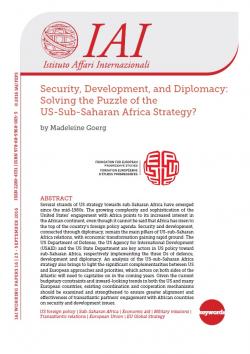Security, Development, and Diplomacy: Solving the Puzzle of the US-Sub-Saharan Africa Strategy?
Several strands of US strategy towards sub-Saharan Africa have emerged since the mid-1980s. The growing complexity and sophistication of the United States’ engagement with Africa points to its increased interest in the African continent, even though it cannot be said that Africa has risen to the top of the country’s foreign policy agenda. Security and development, connected through diplomacy, remain the main pillars of US-sub-Saharan Africa relations, with economic transformation gaining rapid ground. The US Department of Defense, the US Agency for International Development (USAID) and the US State Department are key actors in US policy toward sub-Saharan Africa, respectively implementing the three Ds of defence, development and diplomacy. An analysis of the US-sub-Saharan Africa strategy also brings to light the significant complementarities between US and European approaches and priorities, which actors on both sides of the Atlantic will need to capitalise on in the coming years. Given the current budgetary constraints and inward-looking trends in both the US and many European countries, existing coordination and cooperation mechanisms should be examined and strengthened to ensure greater alignment and effectiveness of transatlantic partners’ engagement with African countries on security and development issues.
Paper produced in the framework of the project “The EU, the US and the International Strategic Dimension of Sub-Saharan Africa: Peace, Security and Development in the Horn of Africa”, September 2016. Publ. also in: Bernardo Venturi and Nicoletta Pirozzi (eds.), The EU, the US and the International Strategic Dimension of Sub-Saharan Africa: Peace, Security and Development in the Horn of Africa, Brussels, Foundation for European Progressive Studies (FEPS) and Rome, Istituto Affari Internazionali (IAI), 2016, p. 152-186, ISBN 978-88-6812-734-3
-
Details
Roma, IAI, September 2016, 23 p. -
Issue
16|23 -
ISBN/ISSN/DOI:
978-88-9368-003-5
Introduction
1. The evolution of the US's engagement with SSA
2. The US as a peace and security actor in SSA
3. The US as a development actor in SSA
4. Recommendations for US and EU engagement with SSA
References



